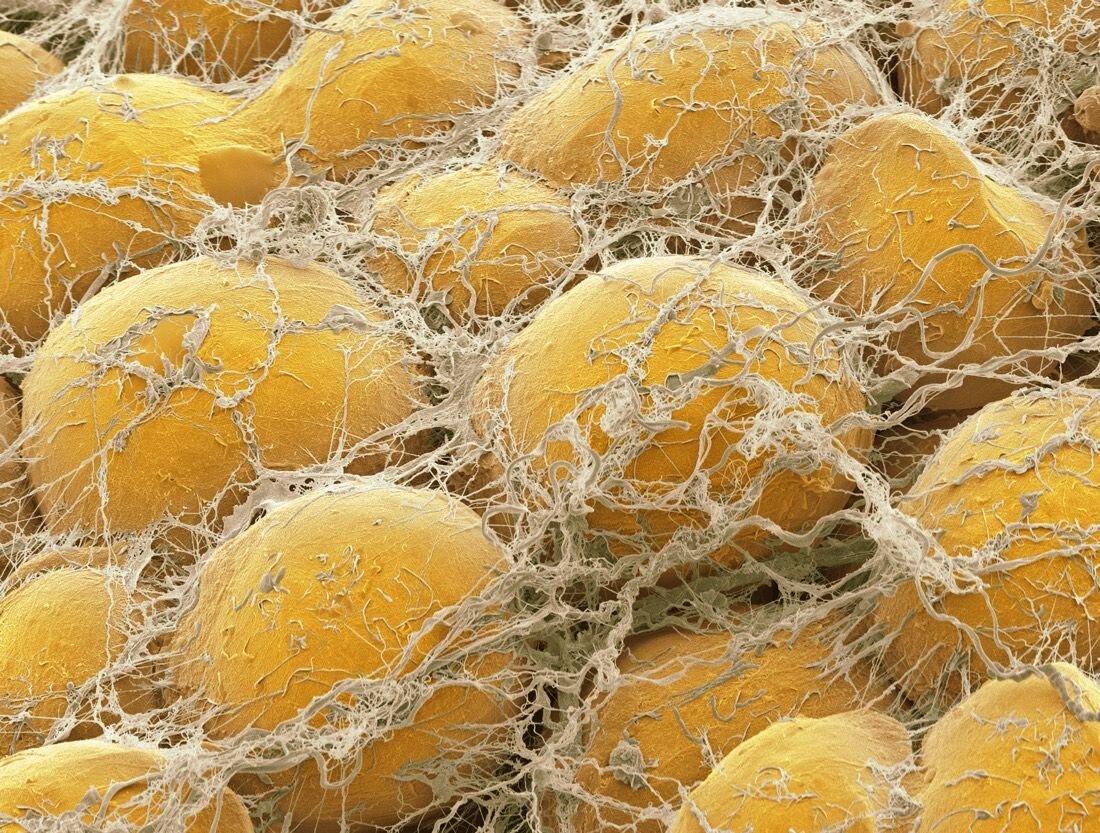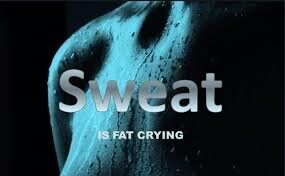Sweat is Just Fat Crying (some of it anyway).
Fat cells in humans develop primarily during childhood and puberty. After that, the number of fat cells in your body remains relatively stable. These cells make up adipose tissue, and they can send out hormones into the body to help regulate everything from metabolism to body weight.
Because we generally have a set number of these cells, gaining weight doesn't typically involve making more. Instead, individual cells expand as the digestive system breaks down and stores food for later use, then they shrink when the body turns to the fat cell in a moment of need
Fat Cells
On average a normal western diet a person will consume about 3.5 kg of food and drinks every day. Of that, 415 grams is solid macronutrients, 23 grams is fibre and the remaining 3 kg is water. What no one takes into account is we inhale more than 600 grams worth of oxygen, too, and this figure is important.
If you put 3.5 kg of food and water into your body, plus 600 grams of oxygen, then 4.1 kg of stuff needs to come back out. Contrary to popular beliefs, all of the fat used by the body doesn't get turned directly into energy, it’s not 100% efficient, but it doesn't magically transform into muscle, and it doesn't exit with your other solid waste.
Fat can't just disappear.
The fat inside your adipose cells is stored and then sent back out into your body as triglycerides. These go through a series of chemical reactions to convert into energy, but the process isn’t 100-percent efficient. Some of the water produced as the body consumes fat exits in the usual way, through your urine and sweat. The British Medical Journal (2014) found that most of the byproducts of fat (including all that carbon dioxide) leaves the body through the respiratory system.
I know what your thinking… I’ll breathe faster and loose weight NOOOOO! It doesn’t work like that. The only way you can consciously increase the amount of carbon dioxide your body is producing is by moving your muscles.
Fat is converted to carbon dioxide and water. Metabolising 100 grams of fat uses 290 grams of oxygen and produces 280 grams of carbon dioxide plus 110 grams of water. The food you eat can’t change these figures. Therefore, to lose 100 grams of fat, you have to exhale 280 grams of carbon dioxide and the water mixes into your circulation until it’s lost as urine or sweat.
If you lose 4.5 kg of fat, precisely 3.8 kg comes out through your lungs and the remaining 720 grams turns into water. In other words, nearly all the weight we lose is exhaled. The only thing in food that makes it to your colon undigested and intact is dietary fibre. Everything else you swallow is absorbed into your bloodstream and organs and, after that, it’s not going anywhere until you’ve vaporised it.
If you want to loose fat…..you’ve got to breath more!!!!!
Remember, if you loose 4.5 kg of fat…..and 720 grams turns to water…… Sweat is actually fat crying .
References
Metabolism. In: Medical Physiology. 3rd ed. Elsevier; 2017. https://www.clinicalkey.com. Accessed March 27, 2020.
Murphy J, et al. Factors associated with adipocyte size reduction after weight loss interventions for overweight and obesity: A systematic review and meta-regression. Metabolism. 2016; doi:10.1016/j.metabol.2016.09.009.



